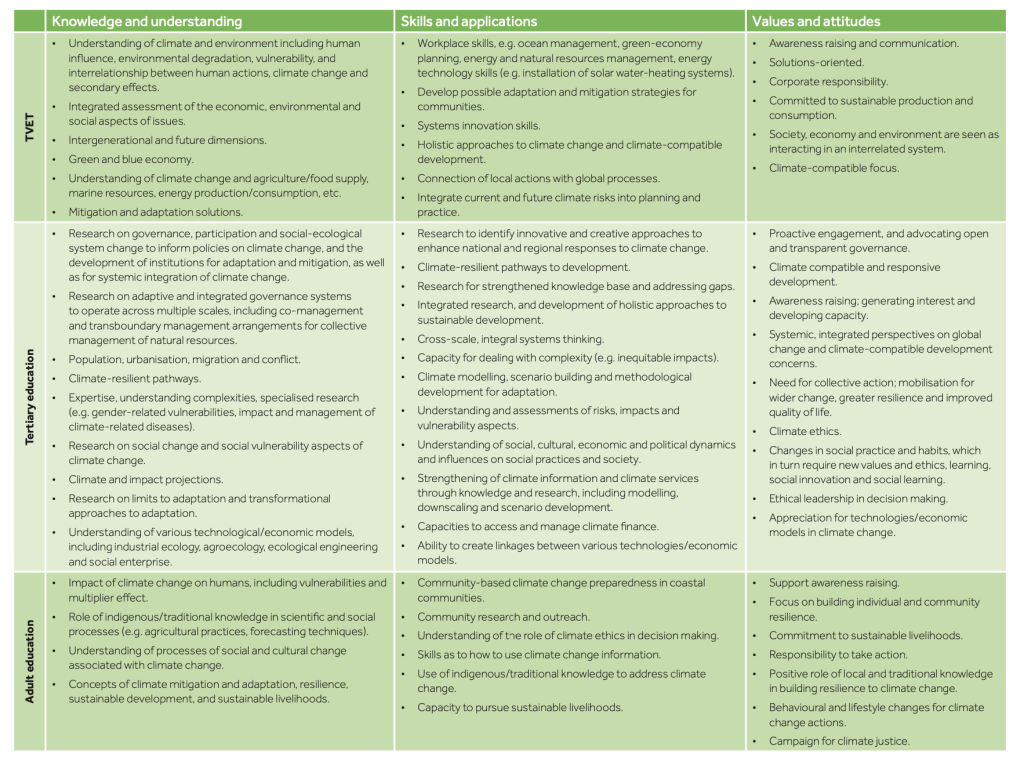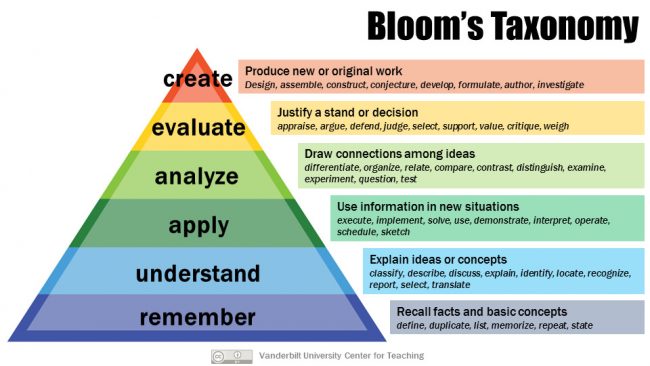Writing Learning Outcomes with the SDGs
There are already learning objectives written for the SDGs. However, you may wish to align these more closely with your own course or program outcomes. Consider using the outcomes provided in the following section of this resource to modify your own.
For example:
+
=
Then, consider what students will do to demonstrate their knowledge, skills, abilities towards this outcome. The Commonwealth Secretariat provides tables which outlines primary through tertiary education examples of activities for each SDG. Use these to design activities which align with your outcomes. Below is an example from the framework for SDG 13.

Draw on higher cognitive order tasks (create/evaluate on Bloom’s taxonomy) which align with higher impact instructional approaches. Finally, consider what evidence you will have of students’ learning and how it will be assessed. Use an assignment guide to align purpose, task, criteria for assessment, and other inclusive priorities. Review other USask principles of assessment and strategies during course design.


